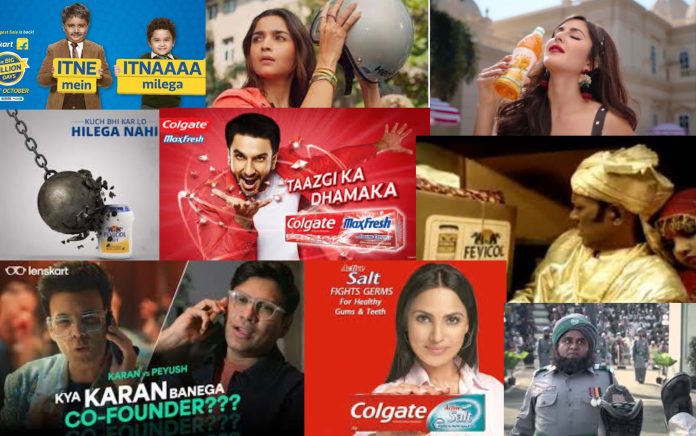The Obligatory List
The art of TV adverts is one that Pakistan hasn’t yet mastered. It’s almost always there, almost at the finish line yet something or the other happens that, it just doesn’t make it. On the other side of the Border, Indian adverts mostly hit the spot.
The art of making great TV adverts begins with the storyline, a compelling storyline, preferably a tear-jerker is a crowd favourite, next visual aesthetics hold a highly important place. An ad that looks beautiful, captures the viewers’ attention, this includes everything from the cinematography, colour schemes, and set design to the costume choices. Then follows, the message, the script, and of course the ever-lovely emotional appeal.
There’s a science behind TVC’s that not many would be aware of but some of the brightest minds in the world are in marketing, and they use it to make the advert as effective as possible. The use of empirical data to understand audiences, their preferences, and their behaviours. It includes market research, demographic analysis, psychographics, and, increasingly, sophisticated AI algorithms that can predict viewer response.
Pakistani-yat
Pakistani adverts are quite enjoyable, almost always a cryfest or an explosion of joy. They’re more dramatic, almost like cinema or dramas. The slow-mo’s, beautiful melodies over well-practiced scenes, and the obviously extremely good-looking actors, not a hair out of place, the perfectly set dupattas, the whole works. Pakistani ads tend to sell dreams, they’re not very realistic, the story might be, but the execution, and production of it are so flawless that it takes away from the authenticity of the script.
The one annoying aspect that I think most viewers and directors would agree upon is the excessive brand presence, whether it be highlighting the product itself in the advert, the colour scheme evident throughout the video or the music repeatedly belting the product out. It’s redundant, boring and predictable. It feels forceful and overwhelming at times.
Pakistani TVCs also revolve around the same themes, family, culture, weddings, and recently disability. They’re quite repetitive and don’t always seem to hit the mark although, the message behind them is not only important but necessary for our society. If only they would lessen the constant iterative brand presence, I think that would make the consumers more compelled to buy the product rather than overwhelming the viewer with the tedious showcasing.
One such example of an advert is Dove, last year they released a campaign on their “intense repair shampoo”. The video began with three girls, models, complaining about their hair, how it was “dull, dry and tangled”, skipping to hair lathering quite artistically with the said shampoo, and taadaa! Shiny, silky, beautiful hair being shown on screen. A studio shot of the Dove shampoo bottle, and a voiceover of all the benefits and claims of the product and ending with the stereotypical shots of hair touching and caressing. Predictable, redundant, and boring. If this is the ad that comes up whilst I’m watching TV, I’ll be switching to a different channel.
Indie-Indian
On the other side of the border, they’re all about social issues and situations, they touch on real-life problems and societal stigmas. They’re quite a heavy watch most of the time, especially for daytime television, and sometimes a little awkward in front of the family.
They’re not as visually appealing as Pakistani ads are but they always seem to hit the spot story-wise, even if they do not make the audience laugh or cry every time, they seem to leave an impact that makes them unforgettable.
The characters aren’t perfectly dressed up, with clothes that aren’t designer, frizzy hair, and imperfect skin. Actors that aren’t always mainstream. But the storylines are creative, they’re smart, and the best part is that product incorporation isn’t at the top of the list. They almost always end with the product’s jingle or tagline but the advert’s storyline might not even relate to the product and that is where they win. They’re realistic, authentic, and memorable. They use social experiments and real-life stories and highlight important problems in society. They’re not selling dreams or the product. They’re selling change and development. Through that, they have customers that return, that remember and embrace the product without the brand’s overpromise.
Dove India, released an ad simultaneously when Pakistan released theirs. The video was eye-opening, heartbreaking, and intense. The title was #DoveBeautyTest and was about young girls being forced to fit into the insane beauty standards of society. Their mothers negatively comment on their physical appearance, instead of allowing them to concentrate on their education. It was real, authentic, and relatable. The addition of the product was only at the end after the girls broke free from the shackles that they were being shoved into.
Pakistan has wonderful storylines and scripts but they fall behind each time because of the ‘over-production’ and the element of perfection, Indian adverts are always memorable and a great watch each time because they’re realistic and relatable.
